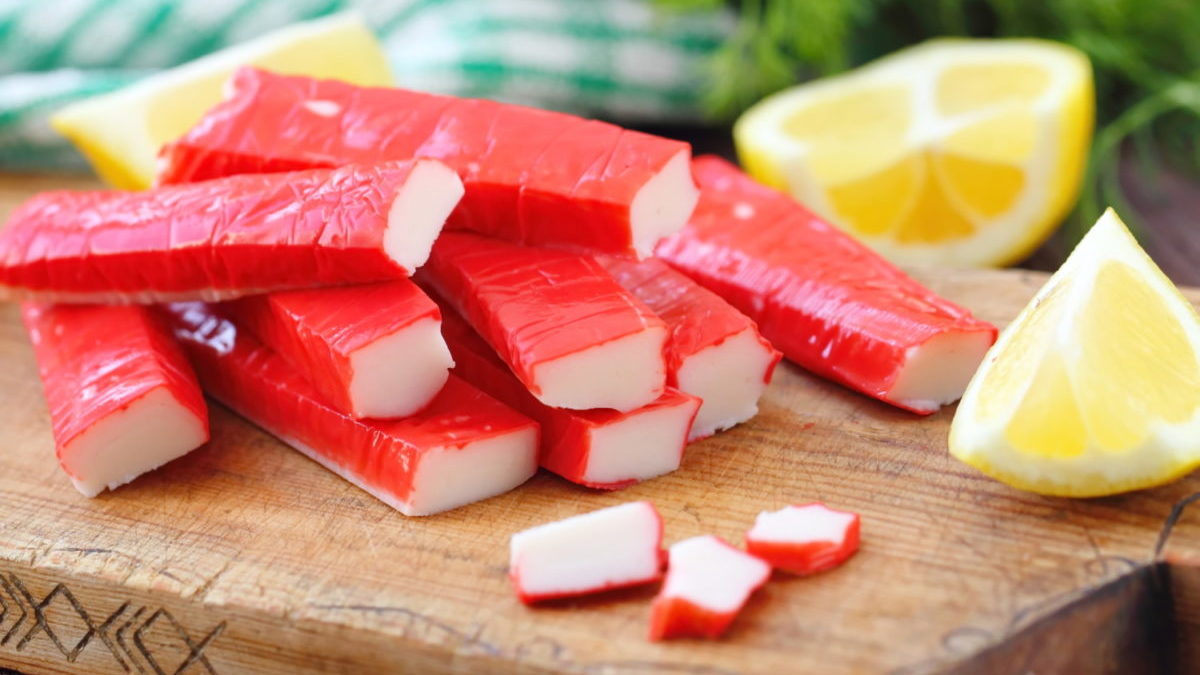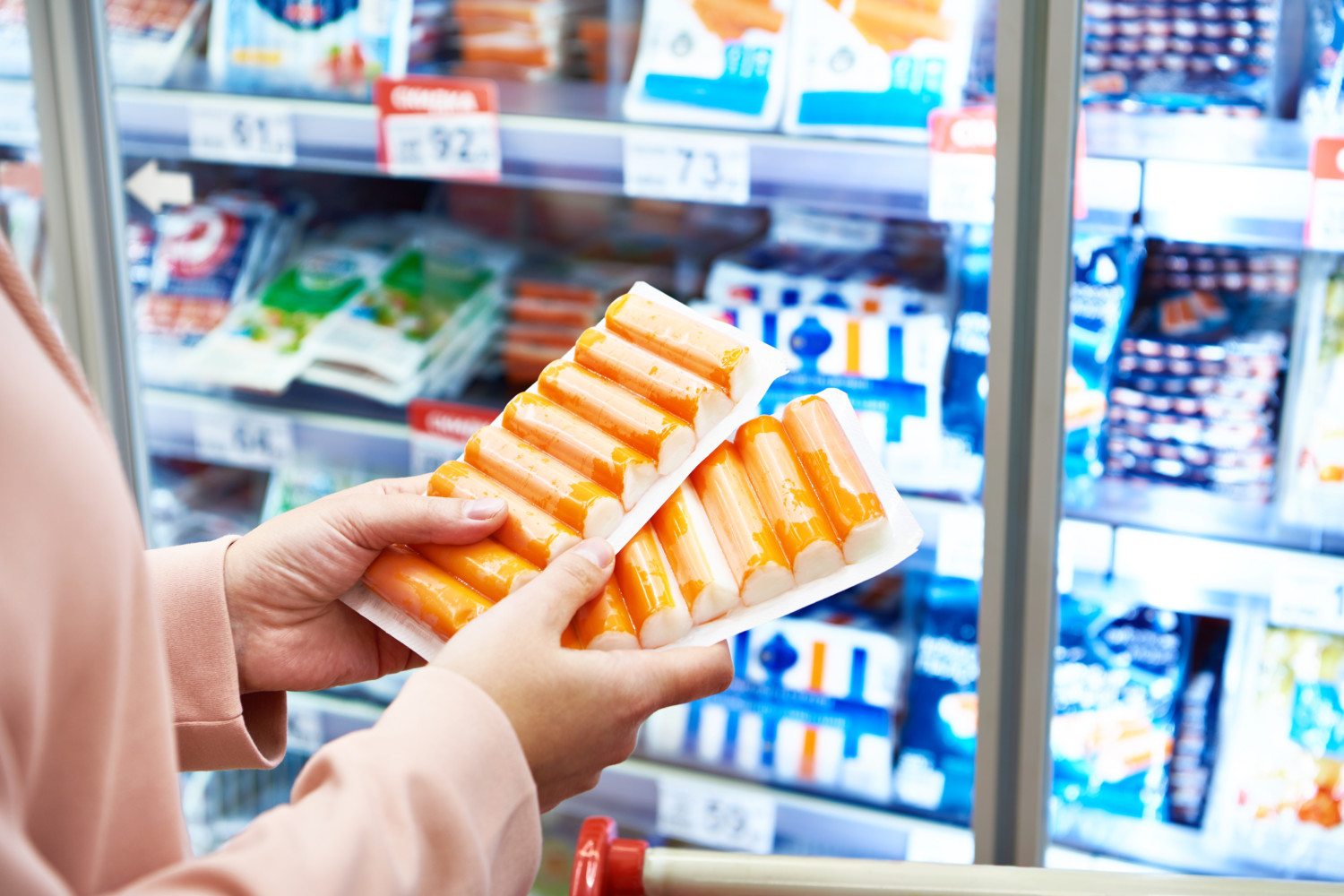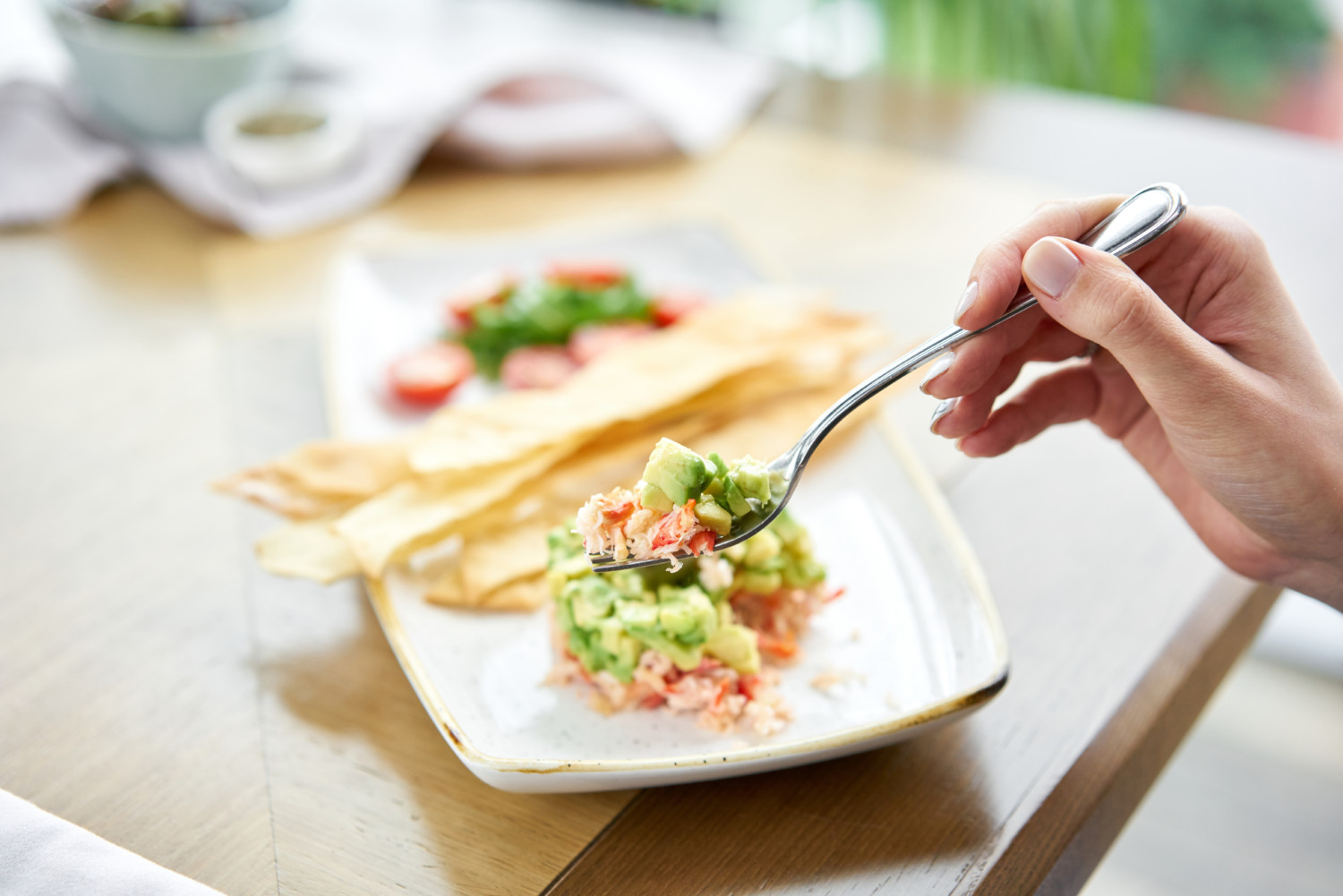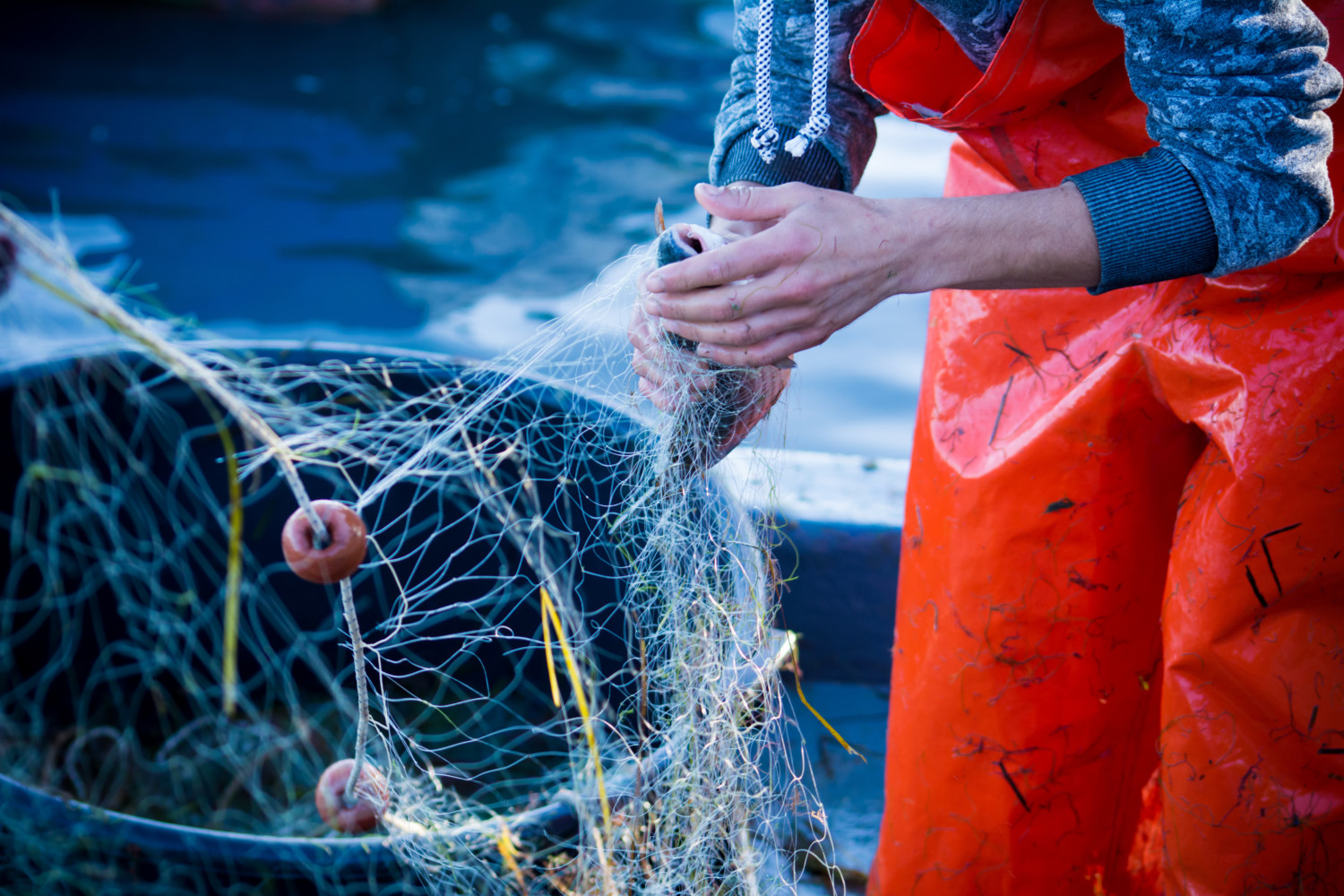What is imitation crab? Here’s what it’s actually made of
Binding agents, like egg white, starch, vegetable oil, or sugar, are added to the surimi paste to make the meat stick together. Occasionally, monosodium glutamate (MSG) is added to the surimi. Orange or red coloring is the key ingredient added to make the mixture resemble shellfish meat. For the preservation of the product, the makers vacuum seal and pasteurize the imitation crab meat. When you buy the product, you will eat it straight from the package.
What Is Imitation Crab?
Fresh crab can be costly. Therefore, imitation crab is often offered as a substitute. Just like the name implies, imitation crab contains no crabmeat. Fish is, however, one of the main ingredients. It is made using surimi, which is a paste made of fish and a few other ingredients. Surimi is often made with pollock, which is also used to make fish sticks and breaded fish products.
How Is Imitation Crab Made?
Imitation crab is made with surimi, a paste made out of finely shredded or pulverized fish. After the fish is minced, it is heated and pressed into shapes that resemble meat from a crab leg. The resulting imitation crab looks similar to the original crab in its coloring and texture.
Binding agents, like egg white, starch, vegetable oil, or sugar, are added to the surimi paste to make the meat stick together. Occasionally, monosodium glutamate (MSG) is added to the surimi. Orange or red coloring is the key ingredient added to make the mixture resemble shellfish meat. For the preservation of the product, the makers vacuum seal and pasteurize the imitation crab meat. When you buy the product, you will eat it straight from the package.
How Is Imitation Crab Different From Real Crab Meat?
You have probably eaten imitation crab meat without realizing it. Since it has become so popular, it has found its way to your plate through restaurant menus, appetizers at parties, and grocery store products. Packages with imitation crab may be labelled as “crab seafood” or “surimi seafood” so you know what you’re buying. On some restaurant menus, an item may be spelled as “krab” as a way to tell you that it’s not made with real crab meat.
Nutritional value. Real crab has significantly higher nutrient levels than imitation crab. For example, imitation crab derives most of its calories from added carbs. The calories in an Alaskan king crab are derived from proteins, not from carbs. If you’re on a keto or low-carb diet and are trying to cut your carb intake, real crab would be the better choice.
Vitamins and minerals. Real crab provides a higher amount of vitamins and minerals. It’s a good source of vitamin B12, selenium, and zinc. When making surimi, these nutrients are lost during washing and processing when the fish meat is exposed to heat. Real crab also has a higher amount of omega-3 fatty acids than its mock substitute. Some packages of imitation crab may have added omega-3, but this isn’t always the case.
Imitation crab contains several processed ingredients. The largest component of the imitation crab product is surimi. It contributes 35% to 50% of the product’s weight. The other 50% to 65% that makes up imitation crab contains:
- Starches like wheat, potato, or tapioca starch make the surimi firm and freezable.
- Salt (sodium chloride) adds flavor and helps turn the minced meat into a sturdy gel. Sometimes, potassium chloride is used.
- Vegetable oil enhances texture, shelf life, and white coloring.
- Sugar and sorbitol add some sweetness and help imitation crab to freeze and thaw with ease.
- Egg whites or soy are often added for a boost of protein and to improve texture, color, and glossiness.
- Water takes up the biggest percentage of all the extra ingredients. It helps create the right texture.
Which Should You Choose?
When choosing between real crab and imitation crab, you should consider:
- The price. Imitation crab is often easier on the wallet, as fresh crab can be very costly.
- Nutritional value. Both are similar in calorie count, but real crab meat has more protein, vitamins, and minerals, and is much less processed.
- Ease of use. You can use imitation crab straight from the package. The product is also easy to find in various forms like sticks, chunks, shreds, or flakes.
Imitation crab, as its name says, is a mock version of crabmeat. It’s a highly processed food containing minced fillet, egg whites, salt, sugar, and other additives to make it look like real crab meat. It’s more affordable, but less nutritious, than fresh crab meat. The decision is yours to make as to which you’ll buy for dinner.
Show Sources
Becky Mansfield, Department of Geography, Ohio State University: “‘Imitation crab’ and the material culture of commodity production.”
Food and Drug Administration: “Compliance Policy Guide Sec. 540.700 Processed and/or Blended Seafood Products.”
Food Chemistry: “Chemical properties of surimi seafood nitrified with omega-3 rich oils.”
Journal of Nutritional Science and Vitaminology: “Cooking losses of minerals in foods and its nutritional significance.”
The New York Times: “SURIMI: WHAT KIND OF SEAFOOD IS IT?”
Open Food Facts: “Surimi/E621- Monosodium Glutamate.”
PLoS One: “Advances in the analysis of complex food matrices: Species identification in surimi-based products using Next Generation Sequencing technologies.”
Seafood Health Facts: “What is surimi.”
SelfNutritionData: “Crustaceans, crab, alaska king, imitation, made from surimi.”
The University of British Columbia: “Imitation Crab Meat.”
Wiley Online Library: “Alternatives for Efficient and Sustainable production of Surimi.”
What is imitation crab? Here’s what it’s actually made of

You might have seen imitation crab meat, sometimes called crab sticks or “krab,” stocked with other seafood at your local supermarket. There is also a good chance you have eaten it and perhaps didn’t even know it.
Crab sticks have become a common stand-in for real crab meat in many restaurants and prepared seafood dishes available at grocery stores because of their much lower cost. But have you wondered what imitation crab really is?
What Is Imitation Crab?
With so many meat substitutes on the market, one might wonder whether crab sticks are a plant-based product. However, imitation crab is not like most meat alternatives you can find while shopping or dining out.
Real crab meat is what imitation crab sticks sometimes start with. Portions of the salty, slightly sweet meat are supplemented by surimi, which is a paste made from deboned fish from which fat and other unwanted bits have been removed. That paste is then formed into what look like logs, which is why imitation crab sticks are sometimes called hot dogs of the sea. Some brands of imitation crab are made entirely of surimi, with a bit of “crab extract” added for flavor.
So, if you’ve been wondering, “What is imitation crab, anyway?” you can rest assured that you are still eating seafood.

The primary ingredient in surimi is usually Alaska pollock, also known as walleye pollock. The fish has white flesh with a mild, delicate taste, a slightly coarse texture and a low oil content. The mild flavor, versatility and low price of pollock make it a popular option for imitation crab sticks, which are a more affordable and accessible option than crab legs for many shoppers and chefs.
Imitation crab sticks may also contain water, starch, sugar, salt, egg whites and vegetable oil, making the meat taste and feel more like real crab, and making it easier to freeze. The red outer layer of the crab sticks comes from red food dye. This ingredient doesn’t alter the flavor of the food but helps it look more like the real thing.
Is Imitation Crab Healthy To Eat?
It will not surprise you to learn that real crab meat has greater nutritional value than imitation crab. However, imitation crab can be incorporated into a healthful diet. It is low in fat, calories and cholesterol. While it does have some vitamins and minerals, like vitamin B12, zinc and selenium, it doesn’t have as much as real crab meat, partly because some nutrients are rinsed away during processing.

Generally speaking, imitation crab is safe to eat, but because it is made using other types of seafood, it can spoil and cause illness if consumed after the best-by date.
You can safely freeze imitation crab meat for six months, according to the Los Angeles Times. Unopened in the refrigerator, the meat is safe to eat for three to five days. Discard any imitation crab that is past its printed expiration date or if it has a foul, fishy smell, slimy surface or unpleasant taste.
It is important to note that since imitation crab often contains either small amounts of real crab meat or crab extract, people with significant shellfish allergies are still advised to avoid eating it.
Is Imitation Crab Sustainable?
National Geographic reports that overfishing poses a significant threat to the world’s oceans, and that some types of crab fishing may be unsustainable. However, imitation crab made using wild-caught Alaska pollock comes from one of the most sustainable seafood products in the world.

Alaska pollock is caught using nets that are not in constant contact with the ocean floor, which is a more sustainable method than those involving dragging nets across the ocean floor, damaging the habitat. By-catch is a harmful effect of nets that drag the ocean floor, as other marine species are unintentionally caught and often killed. The fishing methods used to catch Alaskan pollock have a low by-catch rate.
What Imitation Crab Can Be Used For
Restaurants often use imitation crab while making dishes such as seafood salads, dips, sandwiches and even sushi. You have likely munched on imitation crab meat if you have ever grabbed a California roll from the grocery store.
Imitation crab should be clearly listed on the menu, lest you think you’re paying for the real thing, but some eateries use the phrase “crab sticks” instead. When in doubt, you can always ask the server or chef.

Imitation crab meat is pre-cooked, making it an ideal addition to cold dishes, such as seafood dip or “crab” salad.
However, you can also use it in hot recipes, just like real crab meat. For instance, you could fill wonton wrappers with cream cheese and imitation crab to make “crab” rangoon, or mince it and mix it with crushed crackers, mayo, Dijon mustard and a few other ingredients to make savory “crab” cakes. You can even enjoy crab sticks fresh out of the package as a snack.
If you love the sweet, briny flavor of crab meat and want a more affordable, sustainable option for frequent meals and snacks, imitation crab meat might be something you want to stock in your fridge or freezer. You can always crack open the real thing on special occasions.
